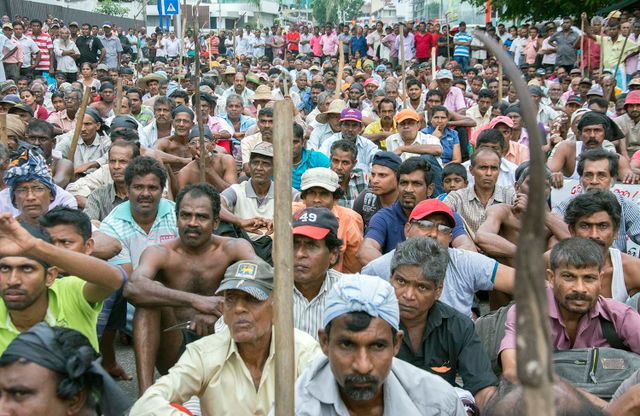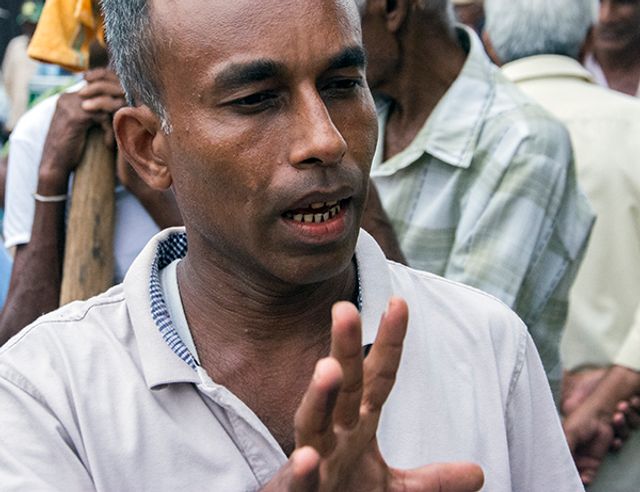Will Morrow
At least seven people have died and more than 70 are still missing presumed dead in the industrial landslide which engulfed a manufacturing area of the southern Chinese city of Shenzhen on December 20. As a 90-metre-high pile of industrial waste gave way, 33 buildings were destroyed in a wave of rock, construction debris and mud that buried over 300,000 square metres of land.
The death toll is likely to rise in coming days as the chance of finding survivors becomes ever slimmer. Lui Guonan, a geological expert at the China Academy of Railway Sciences, described the difficulty confronting the 5,000 rescuers operating 700 excavators and bulldozers. “This rescue effort will be much harder than for earthquakes or other disasters. When buildings collapse, there’s always some space created by the frames. But after a landslide, the mud will fill up that space like toothpaste.”
While the full human toll of the disaster emerges, it has become increasingly clear that the landslide was the inevitable and foreseeable result of the criminal indifference of government administrators and the landfill’s private operators.
It had already been reported that the Hong’ao Construction Waste Dump, where the landslide originated, was operating illegally without a permit for 10 months. The dump opened in February 2014, with a 12-month period of approval. According to the South China Morning Post, records show that the local government supervisor, the Urban Management Bureau in Shenzhen’s Guangming New District, had issued an order for the site to close in July due to safety concerns. The landfill continued to operate and no actions were taken to shut it down.
In a December 23 article, the Wall Street Journal revealed that reports on the Hong’ao landfill by a government-appointed monitor from September to December had documented numerous safety violations and warned that the pile was unstable. The monitor called for the site to suspend operations just four days before it collapsed. All of these warnings, available to both the company and government officials, were simply ignored.
In a document dated September 21-October 21, the environmental monitoring firm, Shenzhen J-Star Project Management, reported “severe” erosion on some slopes of the landpile. It also noted that workers did not wear reflective vests and that safety hazards were not clearly marked.
On October 20, J-Star issued a notice to Shenzhen Yixianglong Investment Development Co., the company which had been subcontracted out by the landfill’s operator, Shenzhen Luwei Property Management Co., to manage the landfill’s day-to-day operations. The notice “requested remedies for problems at the landfill, including insufficient monitoring of work quality and a poor safety culture,” according to the Wall Street Journal.
In a second report dated October 21-November 21, J-Star detailed “slight natural sinking” in part of the landfill, “subpar” safety measures, damaged drains and a shortage of machinery. The report requested that the landfill soil be compressed in order to stabilise it .
Finally, on December 16, J-Star issued a “work suspension order” to Yixianglong, effective immediately, which was ignored.
The central Chinese Communist Party (CCP) government in Beijing has swung into overdrive with the by-now familiar actions that characterise its response to all industrial disasters. The criminal negligence of the private operators and local government administrators is denounced, and a handful of scapegoats arrested, in order to present the disaster as an isolated event and deflect any scrutiny of its broader social implications.
The state-owned Xinhua news agency announced on Monday that Shenzhen police had arrested 12 individuals, including executives of Yixianglong. On Sunday, news outlets reported that Xu Yuan’an, the director of the local Urban Management Bureau which is responsible for overseeing the landpile, had committed suicide by jumping off a building in a residential area of Shenzhen’s Nanshan district.
His death came just two days after central government investigators declared that the disaster was man-made, and warned that “culpability will be sternly pursued according to the law,” according to Xinhua. The same day, Shenzhen’s local CCP secretary declared in a televised news conference that the party leadership “will assume whatever responsibility should be assumed, accept whatever punishment is due, and punish whoever should be punished.”
At the same time, reports indicate that the government is preventing the victims’ loved ones from speaking publicly. The South China Morning Post reported that 76 teams of five government officials had been allocated to “take care of the relatives” of those missing, and that reporters had not been able to contact them since.
All of these measures are aimed at covering over the social reality: that the Shenzhen disaster is the inevitable consequence of the unbridled capitalist exploitation overseen by the CCP regime over the last thirty years, as it has presided over capitalist restoration and ruthlessly repressed any resistance by the working class to the country’s transformation into a sweat-shop for global capital.
There is particular nervousness in ruling circles that the disaster took place in Shenzhen, which has been a model for pro-market reforms that Beijing claimed would lift the living standards of working people. The Beijing News, a widely-read tabloid, commented with evident trepidation, “What is troubling about this accident is that it occurred in a first-tier city, Shenzhen. It is at the forefront of Chinese citizens in its level of modernization.”
A small fishing village in the 1970s located just north of Hong Kong, Shenzhen was transformed into one of China’s first Special Economic Zones. It was one of four cities visited by Deng Xiaoping in 1992 as part of the “Southern Tour” aimed at accelerating the opening up of China to foreign capital and capitalist exploitation. The city is home to some of China’s and the world’s largest technological manufacturing companies, including Foxconn, which operates a mega industrial complex in the city.
Shenzhen now has a population of over 10 million people. While it has the fourth-highest GDP in the country, and is one of China’s wealthiest cities per capita, the levels of inequality are staggering. A tiny layer of a Chinese capitalist class and upper-middle class are concentrated in the city’s wealthy central skyline district, surrounded by a vast mass of impoverished labourers.
Some 60 to 80 percent of the local population are “internal migrants” who have travelled from other regions hoping for work. These workers are not entitled to even the limited social services for healthcare and children’s public education provided to the locally registered population. Shenzhen is the only Chinese city in which the local language, Cantonese, is not the most widely spoken one. The average age in the city is less than 30. The local monthly minimum wage is 2,030 yuan ($US310).
The disaster occurs amid growing signs of restiveness of the Chinese working class as the Chinese economy continues to slow. In the latest reported incident, hundreds of workers from the Shenzhen Zhongtian Xin Electronics mobile phone assembly plant rallied outside local government offices yesterday after the company closed its doors, leaving 2,000 workers unemployed, according to Hong Kong Free Press. The workers are demanding their unpaid wages, after the company began delaying salary payments in 2014. The newsagency reported that at least 76 companies had closed in the area this year.



